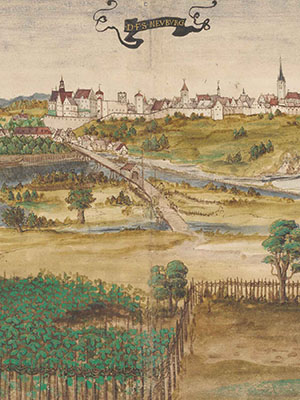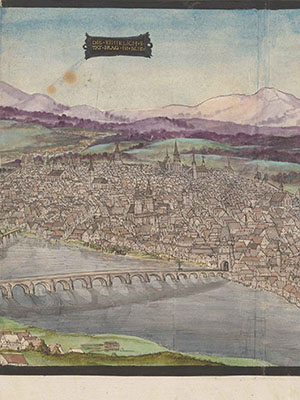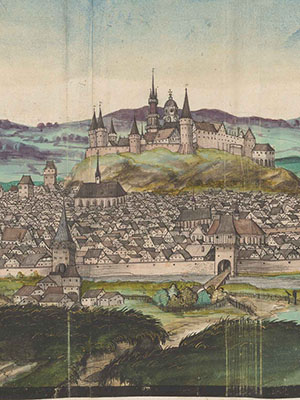Album
As an object of artwork, real images of places and landscapes ("vedute") were still a relatively new Genre in the 16th century. In the Middle Ages, people and space were depicted in a formulaic and stereotypical manner. It was not until the Renaissance that the city was discovered in its uniqueness in representational art. This is clearly reflected in the feather drawings in Ottheinrich's travel album. They were created on the basis of sketches made by an anonymous artist in situ, and were later executed as pen feather drawings, painted with watercolors and enhanced with gold. For the most part, the fifty views are the earliest known depictions of the visited places at all. The views of the places are generally close to reality and thus an important source for the reconstruction of buildings that have disappeared today. In this realistic basic character, however, there are also deliberately incorporated elements of composition and accentuation: buildings are depicted oversized, distances between buildings and places are gathered or stretched, set pieces appear as frames (in the background mountains, in the foreground sunken paths, trees, etc.), only a few sheets reproduce a winter landscape as it must have presented itself to the traveler in reality. All town views are labeled by an inscription band. Ottheinrich's residence is indicated by the special inscription on the page Neuburg: "D.F.S. Nevburg" - "Die Fürstliche Stadt Neuburg". The fifty individual leaves were kept in an compilation volume from the Ebrach monastery until the restoration. It is not known when the anthology was compiled. In 2001, a group of researchers led by Angelika Marsch, Josef Biller and Frank-Dietrich Jacob succeeded in proving the connection between Ottheinrich's trip to Poland and the sequence of views.


